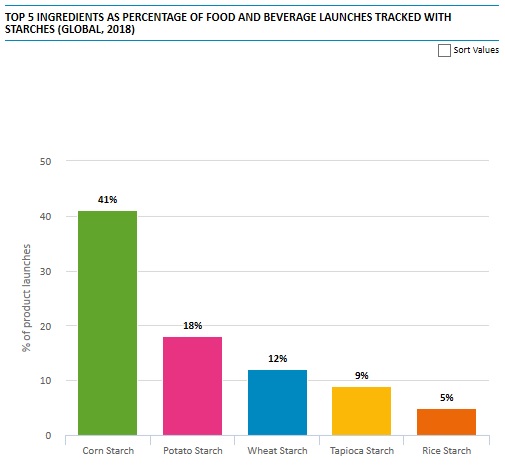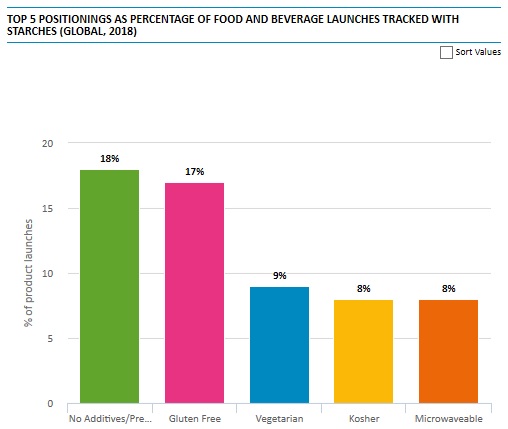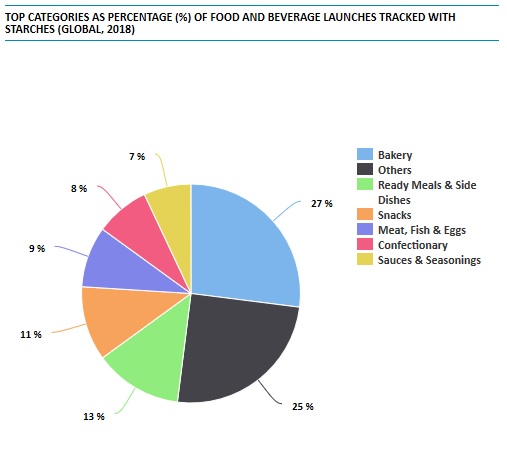July 31st 2019
Availability of substitutes offers stiff competition in modified starch market.
According to a new study by FMI, sales of modified starch are expected to surpass US$ 10,000 Mn in 2019. The increase in demand for processed food products is fueled by the increasing consumption of bakery, dairy, and meat products, and is propelling the global modified starch market growth.
“The market for modified starch is mainly driven by the increasing consumption of processed food products, cosmetics & personal care products, and other consumer goods. The increasing tendency of consumers to adopt the Western style of food habits in emerging countries is increasing the opportunity for modified starch in the global market.” says FMI report.
Over the last century, global population has shown tremendous increase, nearly quadrupling, increasing the consumption of food and beverage products, and driving the global demand for modified starch. Currently, more than half of the world population is residing in urban areas. The increasing urban population is resulting in an increasing consumption of consumer goods and luxury items, due to the ease of access and tendency of consumers to opt for convenience products. This increase in the consumption of convenience food products is creating promising opportunities in the global modified starch market.
Modified Starch manufacturers remain focused on R&D.
The modified starch market has increased opportunities in developing economies and economies in transition, including nations from Asian and Middle Eastern and African regions. The urban population in these regions is increasing rapidly, projected to add around 2.5 Bn in the urban population by 2050, owing to the increasing growth rate of population with subsequent increase in urbanization and industrialization.
With the availability of potential labour pool and lenient government rules and regulations, many major manufacturers of food and beverages, cosmetics, pharmaceuticals, and textiles are penetrating emerging markets such as India, China, Brazil, etc. Also, research and development activities carried out by manufacturers are increasing the demand for modified starch in industries. This offers new opportunities and new market applications for modified starch in the global market.
Modified starch sales surge in F&B as fat replacer, emulsifier, and thickener .
Modified starch is used in a variety of food products such as bakery, convenience, confectionery, dairy, and meat & poultry industries. Modified starch is used as a thickener, fat replacer, and emulsifier in these food and beverage products, mainly to increase their mass and viscosity. Bakery is the leading market sub-segment of the food and beverage end-use segment and is expected to remain strong over the forecast period, according to the FMI analysis. The use of modified starch has a promising application as a fat replacer in low-fat food products. Current consumer perception about eating healthy food products has created a trend for low-fat products. Thus, leading to an increasing demand for modified starch used as a fat replacer in low-fat products, creating a positive outlook for the global modified starch market.
Consumption of cosmetics and personal care products in developed nations has seen a tremendous rise in the last decade and a similar trend is being seen in developing nations as well. Moreover, new cosmetics and personal care products are being launched, targeting specific demographic of the population, and driving the sales of these products. Modified starch that is derived from natural sources, is a multifunctional additive used in the cosmetic and personal care industry. The trend for natural ingredients in cosmetic and personal care products is rising in the global market, thus driving the global modified starch market.
This FMI study offers incisive insights into the modified starch market for the forecast period between 2019 and 2027. The modified starch market is anticipated to record a CAGR of over 5.0% through 2027.
Source: https://www.futuremarketinsights.com/press-release/modified-starch-market



